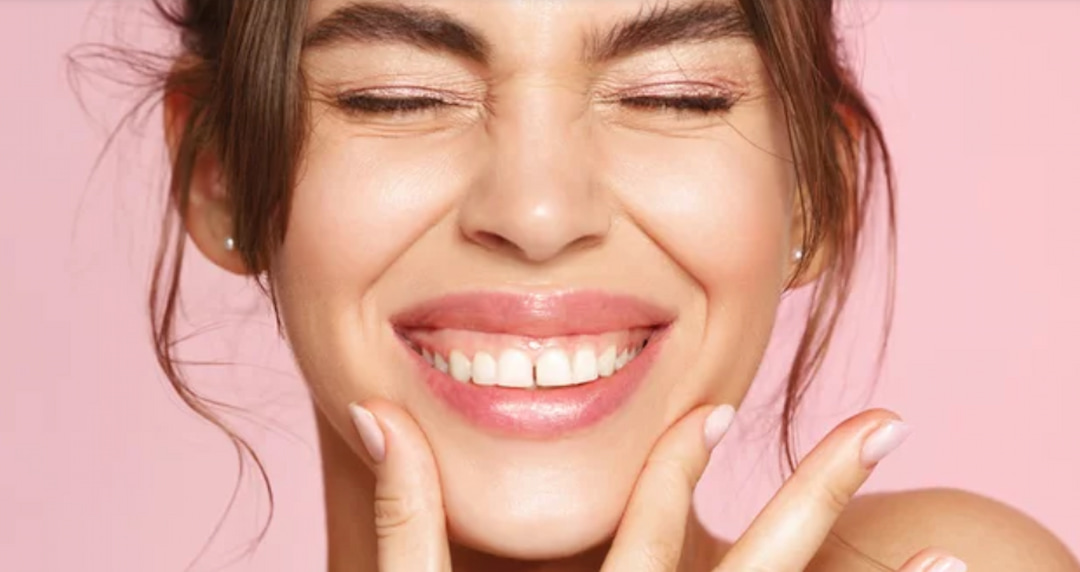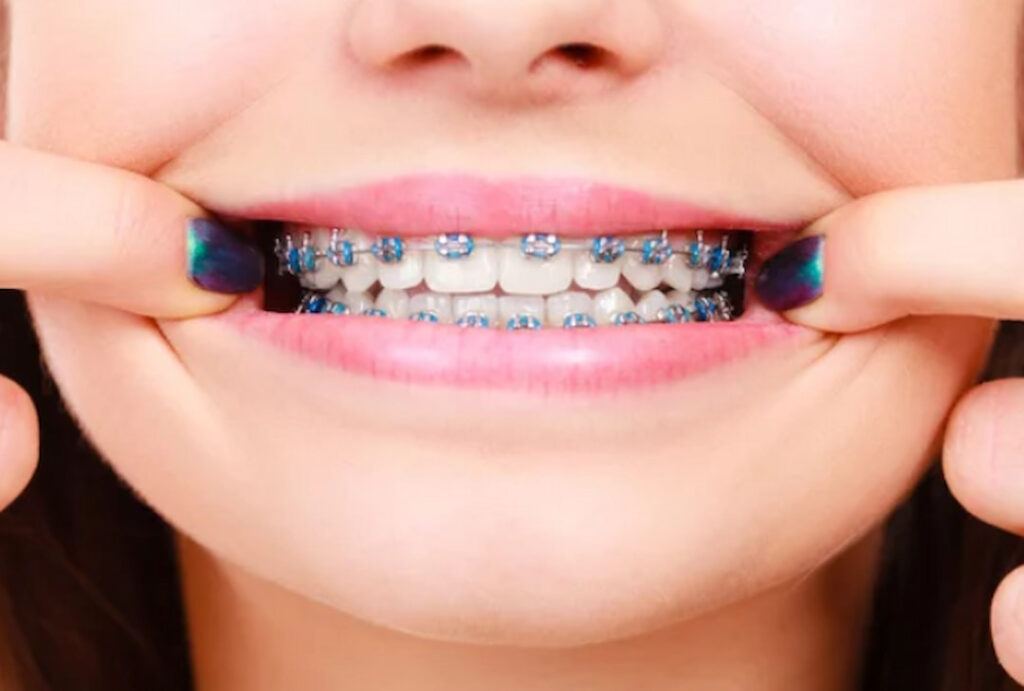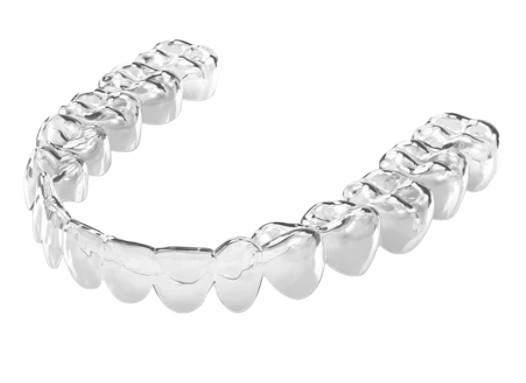
Your smile is an important part of who you are, and having misaligned teeth can significantly affect not only your self-esteem but can devastate oral health as well. In many cases, someone may realize that they need their teeth straightened, but wants to know about options other than braces.
They are often under the impression that braces are a lot of hassle and maintenance, or that they are painful, and want to know about other ways to fix their smile. Some people just don’t like going to the dentist and want to know about methods for straightening teeth that may be DIY or able to be done at home. We’re going to dive into the most popular ways to straighten your teeth without braces, and we’ll cover professional options that you will need a dentist for, as well as some that can be done at home or without professional help.
What Are Braces?
Traditionally, braces are composed of metal brackets that are cemented onto the teeth, and a metal wire that is threaded through those brackets, and the brackets are clamped shut with tiny elastic bands. This pulls the teeth into the proper alignment as determined by your oral health professional. It can take several years and many visits to the orthodontist for adjustments to align the teeth in this way, but they will be better aligned, more accurately and precisely spaced, and they will have been adjusted with professional expertise.

Is It Possible To Straighten Teeth Without Braces?
There are a number of ways to straighten teeth without braces, and while most will require you to visit a dentist or orthodontist, there are still a few that you can do while at home or on a fully-DIY basis. The best way to straighten your teeth is to work with an experienced orthodontist that can not only provide the service you need, but the discretion you need as well. In most cases, DIY or at-home methods will be cheaper and easily done at home, but they will also come with their own distinctive drawbacks that you should probably know about before committing to one.
Methods To Straighten Teeth Without Braces
While there are many ways to straighten teeth without braces, we don’t have the space for them all here. We’re going to cover the most common methods that are used to straighten teeth, both from your oral care professional as well as how they stack up to many modern
Hidden Braces
While these are still technically braces, they are one of the most popular ways to straighten teeth for people that don’t want their appearance to be altered by the look of conventional braces. These are similar to traditional braces, but instead of being mounted to the side of the teeth closer to the lips, they are mounted on the side closer to the tongue, earning them the term “lingual braces”. They will need similar installation and general maintenance to standard braces.
Retainers
For those that only need minor corrections, or for those that have completed conventional braces treatment, dental retainers may be a good option. Once made and issued to the patient, retainers can be replaced or installed in just a moment, and they are much less noticeable than braces when worn. Getting a dental retainer will require working with a dentist or orthodontist.

Orthodontic Headgear
Traditionally used to correct overbites while the patient slept, headgear can apply pressure to the teeth of the upper jaw. If that is where the majority of the misalignments are, using headgear for a prescribed number of hours each day may be able to correct the condition without the installation of braces. Headgear is a medical device, so the patient would need to work with an orthodontist for this treatment.
Dental Veneers
If the patient is looking for a purely cosmetic solution for improving their smile, dental veneers may be an option. They are often crafted from porcelain and are bonded directly to the exterior of the teeth. They can easily hide imperfections or discolorations, and they can be obtained relatively quickly from most dental offices.
Invisible Aligners
One of the most well-known methods of at-home straightening, which is partially DIY, is the recent advent of invisible aligners. One of the most popular brands that people often associate with this method is Invisalign, but most brands and manufacturers work relatively the same.
To start the process, the patient will go through a standard consultation with a company representative via their website or app. Once the consultation is finished, the patient will get a kit in the mail that contains the supplies they need to make their own dental impressions. After the patient gets an impression of their dentition, they take photos of their teeth as well.
The patient then uploads the pictures and emails in the impressions once they’ve set properly, and often signs a required document that verifies that they’ve seen a dentist and have had the appropriate radio imaging done to ensure there are no underlying complications. Sometimes, an actual dentist or orthodontist will review the photos, but this is not guaranteed in all situations.

Once the impressions and the photos are received and reviewed, a model is created of the patient’s teeth and the computer then determines the movements to make with each aligner. These computer models will be the basis for the full series of clear aligning trays that need to be created, often a series of 20. After the trays are completed they are shipped to the patient to wear them on a predetermined schedule.
There are several problems with invisible aligners. First and foremost, the at-home impression kit can easily be done incorrectly, which can lead to complications with the fit of the aligners, which makes them nearly worthless. Additionally, since there are often only 20 trays used to accomplish a complex orthodontic adjustment, the movement can be unreliable and even damaging to your teeth. The damage to your teeth and underlying bone structure can lead to more serious orthodontic conditions that may end up going undiagnosed or misdiagnosed due to the lack of professional assistance.
Also, since the services don’t require any x-rays to begin the creation of the trays, and just require the user to check a box stating they’ve had them done, there is the potential for underlying conditions or previously damaged bone structure to cause the aligners to fail. These conditions may even put the patient’s life in danger if they have autoimmune issues, due to the increased risk of infection in the patient.
DIY Straightening Methods
While there are a lot of DIY projects that can be done with minimal training and tools you can find around the house, teeth straightening should not be one of them. Nevertheless, video platforms like YouTube and TikTok have helped a number of dangerous techniques to gain traction with various audiences. These techniques describe methods of “fixing” your teeth with rubber bands, or in some cases, DIY at-home braces kits for those who want to avoid the dentist or orthodontist.
Too many people are under the impression that all braces do is push the teeth into place, but there is a complex array of factors that can affect the overall dental procedure, the safety, and the end result. Orthodontics considers several variables based on the patient’s physiology, occlusion, tooth size and placement, tooth shape and associated morphology, the patient’s biomechanics, craniofacial development and projected growth, and even the patient’s oral health history.
One of the most common methods for DIY teeth straightening that is circulating right now is the rubber band method. This involves the patient using one or more household or office rubber bands to close gaps or otherwise straighten teeth. There are several problems and risks associated with using rubber bands to adjust your dentition. One of the biggest is that while it may cause teeth to move, it does so in an unregulated, unhealthy, and potentially unsafe manner.

The movement can be much different than what the patient envisions, and can create additional damage. There is a significant amount of blood that is circulating just below the surface of the oral mucosa, and these mucous membranes can be easily damaged by non-sterile and even potentially toxic items like rubber bands. The placement of the rubber bands can cut off circulation, and the non-sterile state of the rubber bands can easily cause dangerous infections in the mucosal injuries it causes.
These injuries can allow dangerous bacterial infections to set in. The mouth is densely packed with blood vessels and even small infections can have a drastic effect on the rest of the patient’s oral health. In the mouth and face, infections spread rapidly, and once they gain a foothold in some facial spaces they can become deadly.
The rubber band method also produces incredibly erratic movement in the teeth, often resulting in bunching or crowding, and even twisting in place. This means that by using DIY methods to shape your smile you can actually end up doing much more damage to your mouth. Often, this means lasting damage like bone loss and damage to the roots of the teeth. Using toxic, dirty items like rubber bands to move your teeth also leads to swelling, and in some cases, that swelling can make the rubber bands difficult or even impossible to remove without surgical intervention.
While there have been people that say they have fixed their smile by using rubber bands or other objects to move their teeth or alter their dentition, the success stories are so few and far between that, they can be considered anomalies.
Don’t Take Chances With Your Teeth
No matter how bad you think your teeth are, or how expensive you think it will be to fix them, nothing is worth putting your lasting oral health in danger. Even the most severe misalignments can be fixed in a healthy and safe way by visiting a professional orthodontist or dentist. In many cases, these professionals will also have ways to make payment arrangements so that dental health can be obtained even on a tight budget.
While straightening your teeth isn’t on it, there is a long list of oral health and teeth treatments that you can do yourself, at home. Among them are conventional dental care like flossing and brushing your teeth, but there are also ways to boost the brightness of your smile with minimal effort and cost. Dr. Brite has many dental and oral health products and accessories that can help your smile look its best without constant visits to the dentist.

